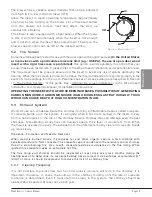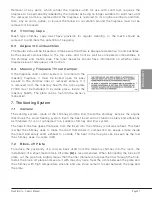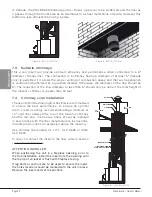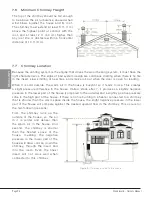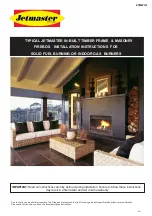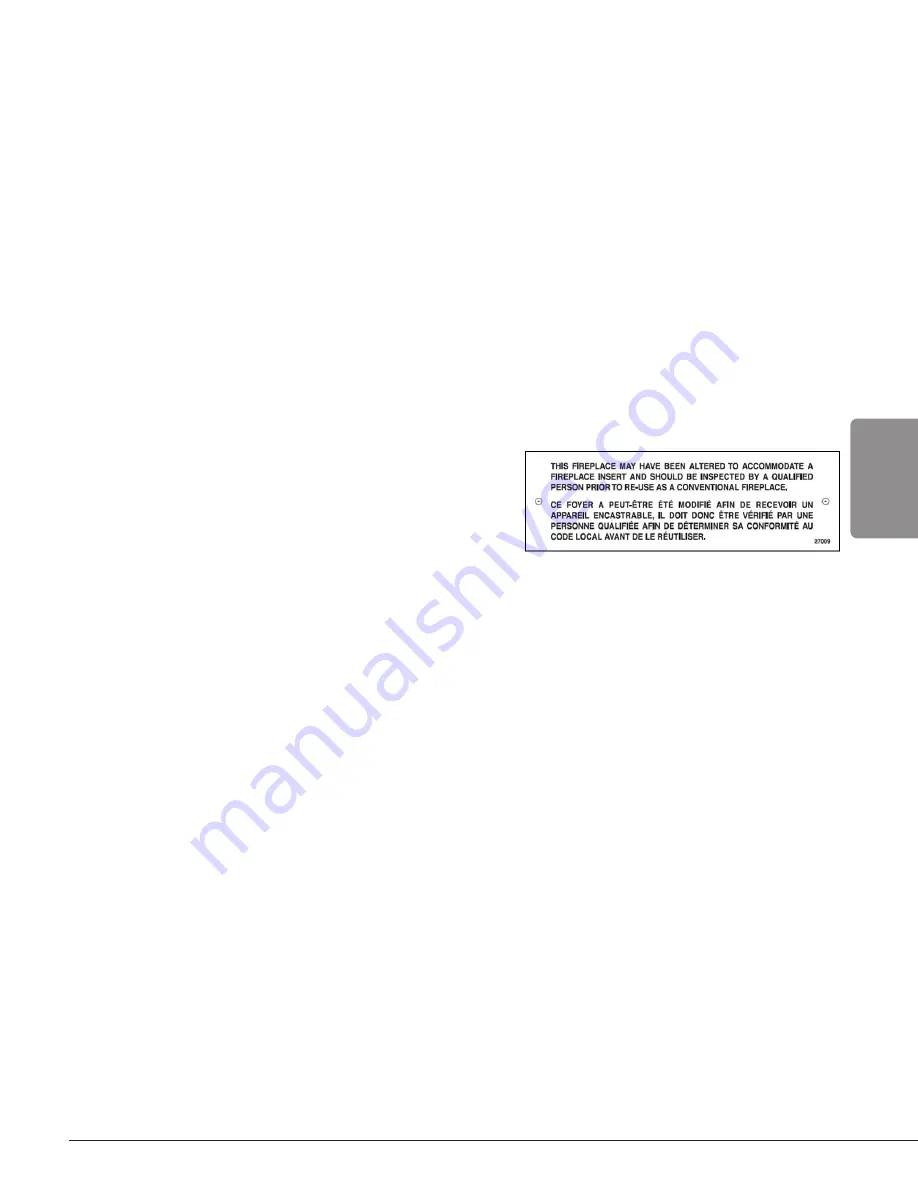
Page 21
Wood Inserts – Owner’s Manual
ENGLISH
Removal of any parts, which render the fireplace unfit for use with solid fuel, requires the
fireplace to be permanently labelled by the installer as being no longer suitable for solid fuel, until
the removed parts are replaced and the fireplace is restored to its original certified condition.
Also, any air vents, grilles, or louvers that allow air circulation around the fireplace must not be
removed or blocked.
6.2 Chimney Caps
Mesh type chimney caps must have provision for regular cleaning, or the mesh should be
removed to eliminate the potential of plugging.
6.3 Adjacent Combustibles
The fireplace should be inspected to make sure that there is adequate clearance to combustibles,
both exposed combustibles to the top, side, and front as well as concealed combustibles, in
the chimney and mantle area. The local inspector should have information on whether older
fireplaces are of adequate construction.
6.4 Masonry Fireplace Throat Damper
If the fireplace draft control system is to remain in the
masonry fireplace, it must be locked open for easy
access to the chimney liner or removed entirely. If it
is removed from the masonry hearth, the notice plate
27009 must be installed in a visible place, inside the
masonry hearth. The plate can be found in the owner’s
manual kit.
7. The Venting System
7.1
General
The venting system, made of the chimney and the liner inside the chimney, acts as the engine
that drives the wood heating system. Even the best insert will not function safely and efficiently
as intended if it is not connected to a suitable chimney and liner system.
The heat in the flue gases that pass from the insert into the chimney is not waste heat. This heat
is what the chimney uses to make the draft that draws in combustion air, keeps smoke inside
the insert and safely vents exhaust to outside. The heat in the flue gas can be seen as the fuel
the chimney uses to create draft.
7.2 Block-off Plate
To reduce the possibility of a cold air back draft from the masonry chimney into the room, the
installation of a sheet metal block-off plate
(A)
is recommended. When fabricating the block-off
plate, cut the pipe hole slightly larger than the liner diameter and pass the liner through the hole.
Install the block-off plate and secure it with masonry nails. Seal the joints between the plate and
the chimney with high temperature silicone and use stove cement to seal between the pipe and
the plate.













